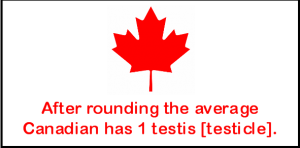The Shorter – 1 of 2
“There are three kinds of lies: lies, damned lies and statistics.” Mark Twain
Twain attributed the quote to British politician Disraeli but researchers have concluded that the phrase originally appeared in 1895 in an article by Leonard H. Courtney. Ironically Mark Twain is credited with saying that “it isn’t what we don’t know that causes problems but what we know for sure – that ain’t so”.
The fault lies not with the science of statistics but with what we know about statistics that ain’t so. .
What is known for sure but ain’t so give rise to widespread abuse and misuse of statistics, misinformation, incorrect conclusions and errors to such an extent that everyone should read “How to Lie with Statistics.”
Written by Darrell Huff in 1954 for the general reader the book outlines errors when it comes to the interpretation of statistics, and how these errors may create incorrect conclusions.
While Mr Huff was a journalist not a statistician he had written many “how to” articles as a freelancer. He did such a good job that the book became a standard textbook introduction to the subject of statistics for college students and remains in print and used as a textbook today.
One of the major challenges in statistics is dealing with variables, eliminating or controlling the variables to ensure the facts are reduced to comparable units. If you cannot achieve comparable units then any comparisons will be comparing the proverbial apples to oranges.
Comparing apples to oranges introduces misleading data and error into the interpretation of the results, which leads to incorrect conclusions.
One of the variables affecting the 2017 Abbotsford Homeless Count was the count taking place on a day when extreme weather measures were in effect, making the homeless substantially more accessible. The greater accessibility increased the number of homeless counted by 50% over the number that would have been counted if extreme weather had not been in effect.
In other words, if extreme weather protocols had not been in effect the homeless count would have been 180*, not 271.
*more or less. There are numerous variables that affect homeless counts. Individual variables may have a significant [up or down] impact, a minor impact, a negligible impact or even no impact depending on circumstance specific to the day the homeless count is conducted.
Each variable has a direct, distinct and different effect dependent on the circumstances on the day the count is done. The variables and their effects are different for every count as a result of the changes in the circumstances of each individual count. The variability of each individual count means comparing the results of different counts will result in erroneous interpretations which will lead to incorrect – false – conclusions.
The significant [50%] impact of the extreme weather protocol resulted in conclusions that significantly varied from reality.
The 79% increase in Abbotsford’s homeless population between 2014 and 2017 was pure Bunkum..
Abbotsford’s homeless population did increase 2014 to 2017, but the bulk of the jump cited in the count report resulted from the effect the variable extreme weather had on accessibility to the homeless on count day, boosting count numbers 50% above a non-extreme weather day.
The purpose, and therefore the design, of the homeless count was never to achieve an accurate count, within an acceptable margin of error, of the entire homeless population in the count area. The counts are conducted to provide numbers to compare to the numbers of counts conducted in different years.
The combination of some data and an aching desire for an answer does not ensure that a reasonable answer can be extracted from a given body of data. John Tukey
This is not rocket science. It is basic high school math and/or basic statistical science.
The real question is why those conducting the count insist on ignoring basic math and science to generate misleading gibberish that results in false conclusions, obscures the true extent [size] of the homeless population and promoting the growth of the homeless population.


